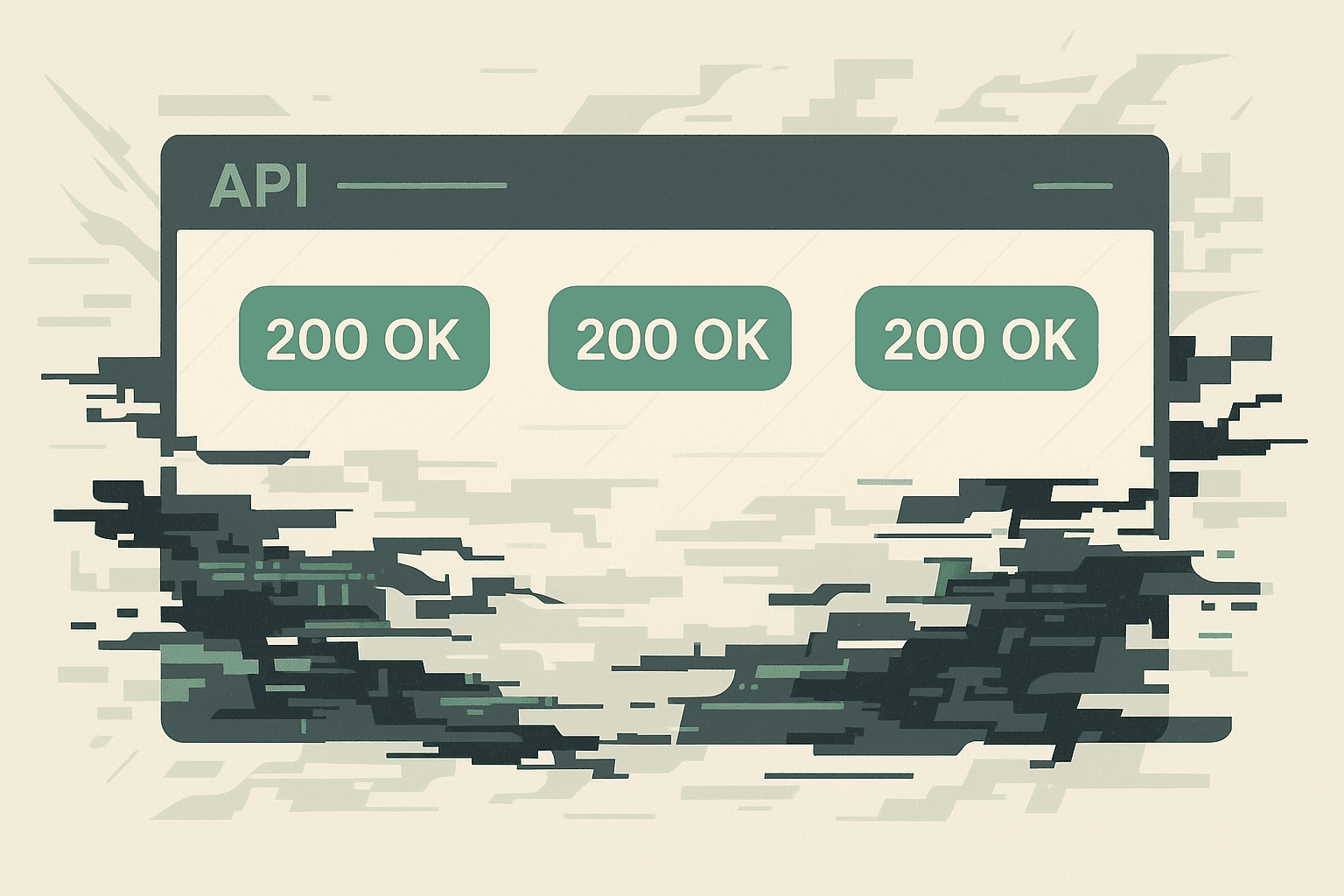Your monitoring tool says everything is fine—200 OK everywhere. But your users? They’re staring at a blank screen or broken layout. Welcome to the world of false positives in API monitoring.
What Is a “False OK” in API Monitoring?
An API endpoint returning a 200 status code doesn’t always mean the system is healthy. It simply means the server responded. What if the payload is empty, the data is outdated, or a third-party dependency silently failed?

Common Cases of Broken but “OK” APIs
- Empty success: API responds with 200 but returns no usable data.
- Outdated cache: API serves cached responses even when the backend is down.
- Silent fallback: Third-party service fails, but your system masks it with default data.
- Partial failure: Multi-step APIs return partial data with success code.
Why Synthetic Checks Aren’t Enough
Traditional monitoring often stops at checking HTTP status codes. But that’s not enough. What really matters is:
- Is the data correct?
- Is the response complete?
- Does the payload meet expectations?
How Functional Checks Save You
Functional API monitoring means checking not just if an endpoint responds, but also if it behaves as expected:
- Verify key fields exist and are not empty
- Validate response schema
- Check content freshness
- Monitor actual user journeys through chained requests

How Watchman Tower Helps
At Watchman Tower, we go beyond simple status checks. Our API monitoring allows you to:
- Create rules to validate data and fields
- Get alerts on schema mismatches or content issues
- Chain requests to simulate real workflows
✅ Stop trusting 200 OK blindly. Start monitoring what truly matters.



